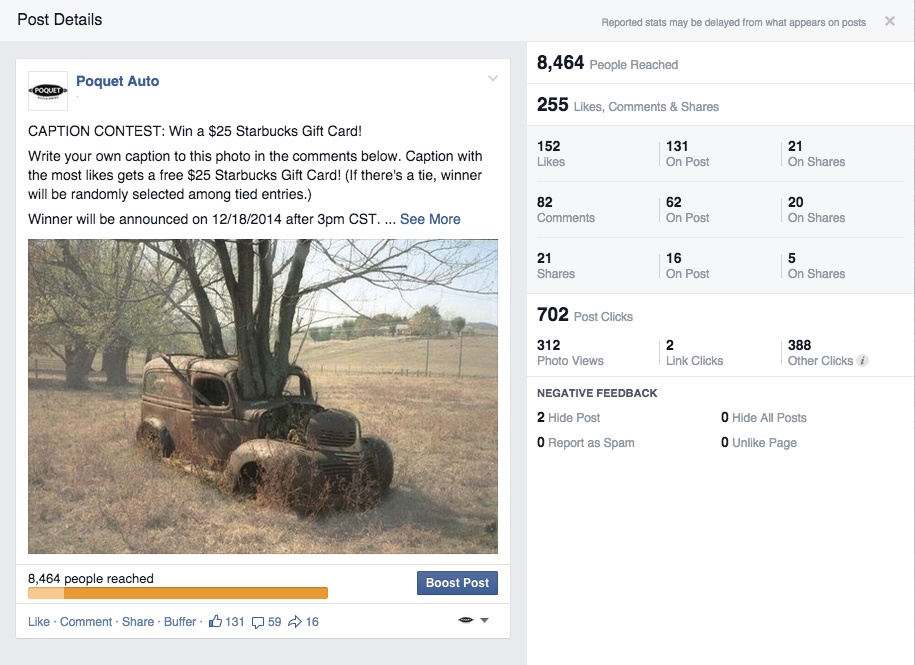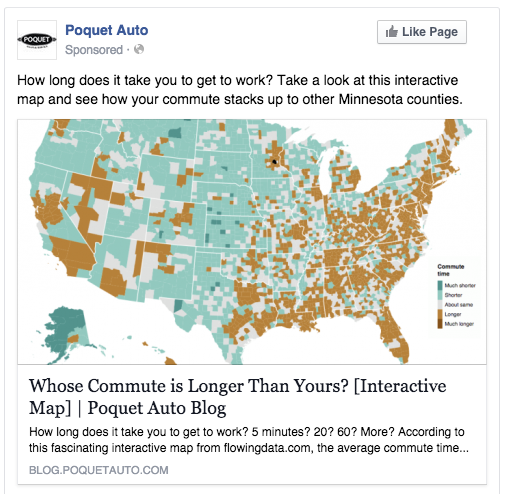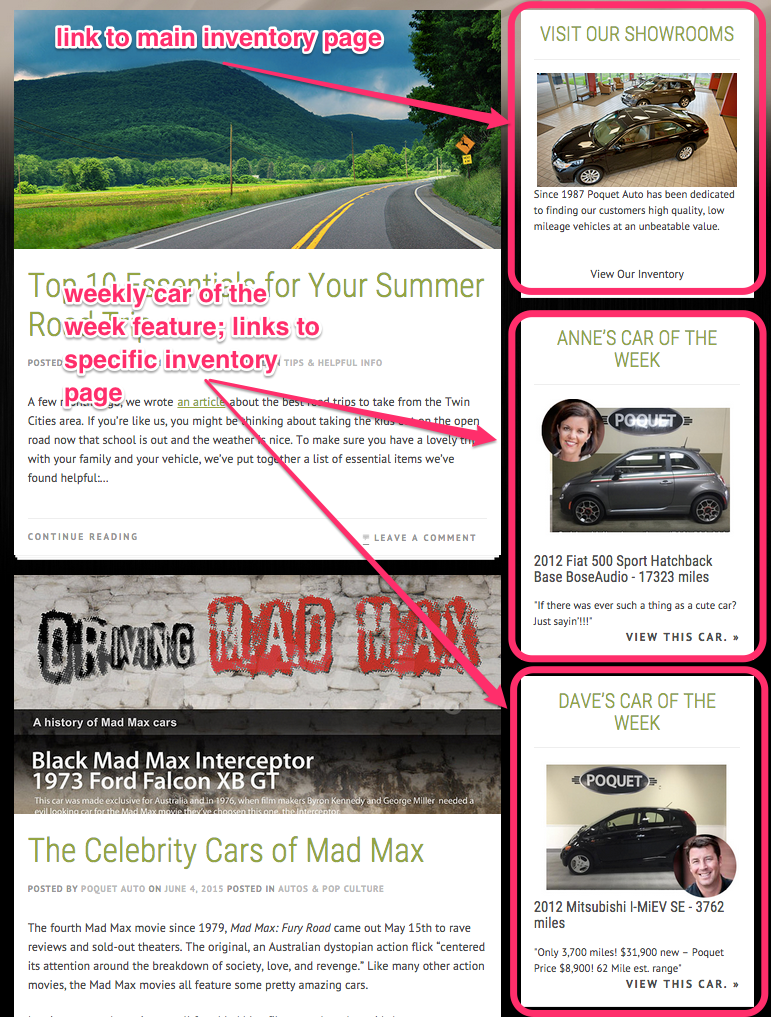Getting Results from Facebook Ads: How we boosted traffic (300%) and social engagement (276%)

These days, you hear a lot of talk about the importance of delivering a top-notch customer experience (CX). But it’s the rare gem to find a business that walks the talk each and every day. Poquet Auto, a Minneapolis-area car dealership and a client of ours, is just such a gem.
Poquet delivers an outstanding customer experience from start to finish. And their strong, loyal customer base is evidence of their CX success.
The Challenge.
Despite the strong in-person impression the team makes, that same high-touch, personalized engagement wasn’t continuing across digital channels. And with anywhere from two to three years or more between auto purchases, this was a problem.
We needed to find a way to effectively maintain strong brand engagement with their audience throughout the buying process – even when buyers weren’t actively in the market to purchase a car.

The Solution.
With a customer base largely in the 35+ age range, we focused on building a social strategy for Poquet that was centered around Facebook. And with Facebook’s diminished organic reach, we knew that a paid Facebook ad strategy was a must.
The primary goal of the social strategy was to boost ongoing brand engagement among customers. A secondary goal was to increase exposure to new audience members.
Given these goals, the following Facebook objectives were identified:
- Increase Facebook post engagement
- Drive website traffic (specifically to auto inventory pages)
- Drive blog braffic
Here’s the approach we took to achieve the above defined objectives…
Increase Facebook Post Engagement
To increase Facebook engagement, we launched weekly contests. The contests were designed purely to incentivise fun, low-barrier participation among the audience. The purpose was to engage, not sell. As such, the contests never included “salesy” content.
While the primary target audience for these posts included Poquet customers, many contests sparked participation from non-customers as well.
Each weekly contest was also promoted via the Facebook ad objective “Page Post Engagement”.
 example of a weekly Facebook contest post
example of a weekly Facebook contest post
Drive Website Traffic (specifically to auto inventory pages)
While the contests avoided “salesy” content, we also wanted opportunities to showcase the exceptional quality reflected in the Poquet inventory. To do this successfully, we needed to walk the fine line of showing off high-quality inventory, while also appealing to audiences on a personal level (and without coming across as too salesy).
The key to success was coupling the unique voice and personality of Poquet staff members with select cars.
For example...

With these featured cars of the week, Poquet fans strongly connected to the posts on two levels:
- They connected with the Poquet staff member and to his/her fun personality expressed in the update.
- Audience members were also interested in the hand-picked automobile featured by the Poquet staff member.
To boost exposure and increase the overall number of website clicks, we promoted the Facebook post and used the following targeting criteria: geolocation, connection to Poquet Facebook page, and auto interests.
Drive Blog Traffic
The first two objectives mentioned above are essentially opposite sides of the content spectrum – pure, in-platform engagement vs. a clear product promotion. For a well-rounded social strategy, we wanted to integrate a middle-ground objective as well.
Leveraging Facebook to drive traffic to the Poquet blog was the perfect middle-ground approach because it allowed Poquet to…
- Engage existing Poquet audiences as well as new audience members around content that’s helpful, informative and/or entertaining.
- Provide a deeper brand experience via the Poquet domain rather than within Facebook.
- From within the blog, serve up opportunities to view the Poquet inventory.
To boost exposure and increase the overall number of website clicks, we shared the Poquet blog post via Facebook. Then, we promoted the Facebook post via the paid ad objective “Clicks to Website”.

Note: In order to promote an existing Facebook post under the “clicks to website” objective, you need to use Facebook Power Editor, rather than Facebook Ads
We also maximized use of the blog sidebar to drive traffic back to the Poquet inventory pages. Here’s how…

Results.
After implementing the Facebook strategy, Poquet experienced a 300% growth in website traffic referrals from Facebook. They also experienced a 276% increase in Facebook engaged users. And, their Facebook organic reach increased by 29%.

Conclusion
Social media can be a powerful component of your overall marketing strategy. But in order to maximize the use of social, it's important to start with well-defined goals and objectives. And these days, a paid ad strategy should absolutely be included in an overall Facebook marketing plan.
Are you wondering how to get stronger results from your social media efforts? Take a look at this ebook on increasing your Facebook reach to generate more leads and close sales.
And if you ever want to talk social strategy, let’s chat!
Share this
You May Also Like
These Related Stories

Think Your Facebook Ads are Failing? Compare Against These Benchmarks.

How to Build Data-Driven Personas Using Facebook Audience Insights


/Accreditations/CRM-Implementation-Accredited-Badges.png?width=170&height=138&name=CRM-Implementation-Accredited-Badges.png)
/Accreditations/Onboarding-Accredited-Badges.png?width=170&height=137&name=Onboarding-Accredited-Badges.png)
/Accreditations/Custom-Integration-Accredited-Badges.png?width=170&height=137&name=Custom-Integration-Accredited-Badges.png)

